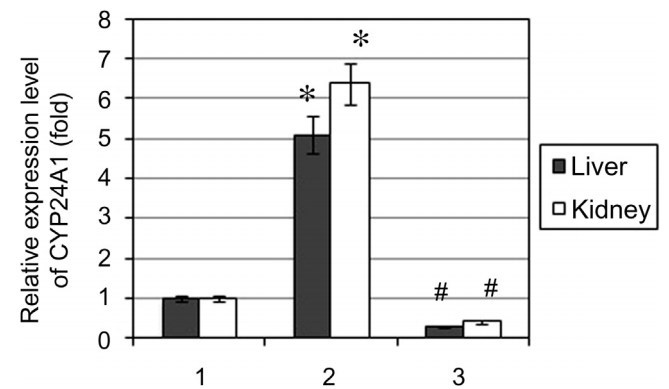Diabetes changes liver genes so as to destroy (catabolize) Vitamin D
Expression pattern of CYP24 in liver during ageing in long-term diabetes
Acta Histochemica. Available online 9 May 2016, doi:10.1016/j.acthis.2016.05.001
Ana Vuicaa, Katarina Vukojevića, b, Lejla Ferhatović Hamzićc, Milka Jerića, Livia Puljakc, Ivica Grkovića, Natalija Filipovića, b, ,

📄 Download the PDF from Sci-Hub via Vitamin D Life
Association of liver calcitriol (active vitamin D metabolite) catabolism with osteomalacia during prolonged use of certain drugs was reported in several recent studies. To examine whether the increased calcitriol catabolism could be a potential link between ageing/diabetes mellitus (DM) and bone loss, we studied the dynamic of expression of CYP24, the main calcitriol catabolising enzyme in the liver of rats during ageing and a long-term experimental DM1. DM1 model was induced with intraperitoneally injected streptozotocin (STZ) (55 mg/kg). Sprague-Dawley rats were sacrificed 6 and 12 months after the DM1 induction. The immunohistochemical analyses of CYP24 and transforming growth factor ß 1 (TGF-ß1) expression in the liver were performed. We found that ageing and long-term DM1 resulted in a significantly increased expression of CYP24 in hepatocytes, as well as in non-hepatocyte liver cells (Kupffer cells, hepatic stellate cells and sinusoidal endothelial cells). Ageing and long-term DM1 resulted in an increased expression of TGF-ß1 as well. Expression of CYP24 coexisted with the expression of TGF-ß1 in all types of hepatic cells.
We concluded that liver has the capacity for an active vitamin D catabolism in different populations of liver cells, especially in sinusoidal endothelial cells, through an expression of CYP24. That capacity is substantially increased during ageing and long-term diabetes mellitus. Increased liver calcitriol catabolism could be one of the mechanisms of the bone metabolism impairment related to ageing and diabetes.
